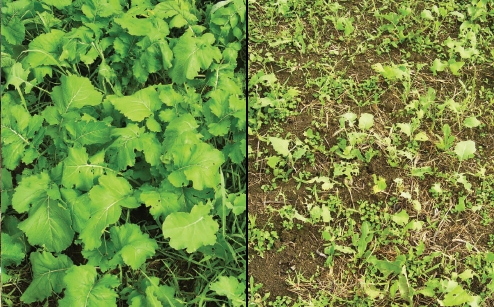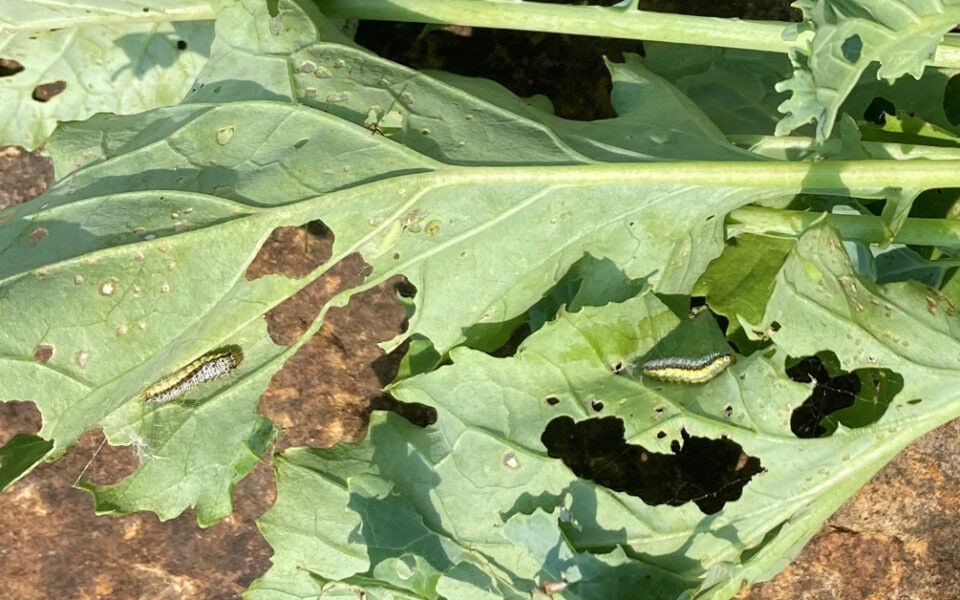Fall armyworms or (spodoptera frugiperda) can be a hunter’s worst nightmare. This forage feeding pest can quickly demolish and destroy a food plot in a matter of days. Throughout my travels I have heard the same story over and over again. “My plot was up and doing great, a week or so later I returned to find that my plants had been destroyed. What happened? ” This is a classic example of fall armyworm damage.
Armyworm Life Cycle
This insect over winters in warm climates along the gulf coast of several southern states including Alabama, Florida, Mississippi and Georgia. In the spring of the year adults known as moths migrate north beginning the first life cycle of the worm. These moths lay their eggs in masses of 50 to 100 covering them with a fuzzy, gray substance that comes from the female moth. In just a few days the eggs hatch and small larva begin searching for foliage on which to feed. Unlike other armyworms, the fall armyworm feeds continuously day and night. These larvas will continue to feed for two to three weeks before pupating into the soil. This feeding period is when they are most likely to destroy food plots, lawns, and agricultural fields.
These worms begin to migrate north during late July through early August, feeding on many kinds of crops and grasses. The first sign of armyworm infestation can be identified by small circular areas of your plot that look to be turning a brown color. These brown circular areas will grow quickly as the worms grow older and require more green vegetation to survive. There may be four to five generations of armyworms that cycle out throughout one sum-mer. By the end of the fifth generation the numbers in this population can be mind boggling.

Before and after food plot damage from armyworms
Armyworm Identification
Fall armyworms can be identified by a distinct stripe on their back but often vary in color depending on the vegetation that each individual worm ingests. They will also have a light colored, inverted Y, stamped on the head of the larva and four black dots centered on the abdomen. The larva can range in size from a three day old worm being a quarter inch in length to a fully matured worm that may reach one inch or longer.
Controlling Armyworms
Controlling these pests can be a costly project, but could be the difference in having a food plot this hunting season or not. It is important to scout your food plot for these worms on a regular basis. The earlier that fall armyworms can be detected, the easier they may be to control. Once a worm reaches the adult stage they may become less susceptible to insecticides and harder to kill. Besides, once they have become adults the majority of the damage to your plot has already been done.
There are several different insecticides that will control the fall armyworm. Consult with your local Co-op, Farm and Feed store, or contact BioLogic to see what applications are recommend. Hopefully you will not have to deal with these pests this fall, but be prepared just in case. Under-standing the fall armyworm is just another advantage to help you grow and maintain successful food plots.
Dive deeper in to understanding armyworms on episode 49 of the GameKeeper Podcast






